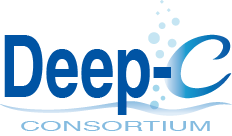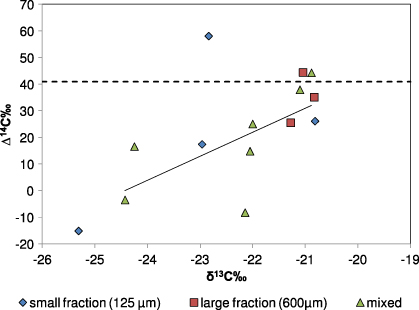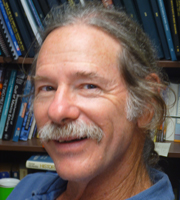“Methane Eaters” Feasted During 2010 Oil Spill
|
Figure 1. Carbon isotope biplot of plankton samples. Blue diamonds represent values for the smallest size fraction plankton (125 μm), red squares represent values for the larger size fraction plankton (600 μm) and the green triangles represent samples collected in 2010 that were not divided into separate size fractions. More details. |
FSU (January 2014) – The 2010 Deepwater Horizon oil spill released large volumes of natural gas into the Gulf of Mexico — oil and methane. While much of the discussions centered around the oil, approximately a third of the carbon released during the spill was methane.
Initial concerns focused on how much methane would reach the atmosphere and possibly affect climate (methane is a greenhouse gas). But an army of methane-eating microbes got to work immediately after the blowout, eating a vast majority of the methane released.
“It turns out that methane (natural gas) released into the environment is consumed by certain bacteria,” explains Dr. Jeff Chanton, Professor at FSU and co-author of a 2012 study of radiocarbon in the Gulf. These special bacteria called methanotrophs (“methane eaters”) are exceptionally good at absorbing or consuming methane and may enter particulate organic carbon and then the food web supporting zoo-plankton and other aquatic organisms.
Using stable isotopes and radiocarbon tracers, scientists have been able to confirm this occurred during the 2010 oil spill. Some carbon released from the oil spill entered the food web through bacterial consumption of methane.
In 2012, Deep-C scientists documented what they had found — that 5-10% of the carbon composing plankton collected in 2010 and 2011 could be attributed to carbon released during the oil spill (aka petro-carbon).
“We found that the smaller size plankton appeared to have more petro-carbon in it,” explains Chanton, “and that methane (as opposed to oil) seemed a more likely avenue for the intrusion of petro-carbon into the food web.”
In a 2013 study (Cherrier et al., 2013) the researchers report that tiny particles floating in the deep Gulf water column have organic carbon in them that matches the carbon released as methane from the Deepwater Horizon spill. They estimate that 28-43% of the carbon in these particles is from fossil methane from the spill.
It turns out that methane (natural gas) released into the environment is consumed by special bacteria called methanotrophs, meaning “methane eaters.” These bacteria are unusually efficient in converting gas into biomass. While consumers convert on average only about 10% of the chemical energy in their food to their own organic tissue energy, these “methane eaters” can transfer as much as 50%. This is significant and it allows the highly successful symbiotic relationship of methanotrophic bacteria with seep fauna, particularly mussels.
Some portion of the methane released from the Deepwater Horizon oil spill went into bacteria, which then became small particles, which were then ingested by plankton.
References
Chanton, J.P., J. Cherrier, R.M. Wilson, J. Sarkodee-Adoo, S. Bosman, A. Mickle, W.H. Graham (2012) Radiocarbon evidence that carbon from the Deepwater Horizon spill entered the planktonic food web of the Gulf of Mexico , Environmental Research Letters
Cherrier, J., et al. (2013) Fossil Carbon in Particulate Organic Matter in the Gulf of Mexico following the Deep Water Horizon Event. Environmental Science and Technology Letters
|
|
Dr. Jeff Chanton is a member of the Deep-C (Deep Sea to Coast Connectivity in the Eastern Gulf of Mexico) Consortium, which is investigating the environmental consequences of petroleum hydrocarbon release in the deep Gulf on living marine resources and ecosystem health. Deep-C is examining the geomorphologic, hydrologic, and biogeochemical settings that influence the distribution and fate of the oil and dispersants released during the Deepwater Horizon (DwH) accident, and using the resulting data for model studies that support improved responses to possible future incidents.
The Deep-C Consortium is a long-term, interdisciplinary study investigating the environmental consequences of petroleum hydrocarbon release in the deep Gulf of Mexico on living marine resources and ecosystem health. The consortium focuses on the geomorphologic, hydrologic, and biogeochemical settings that influence the distribution and fate of the oil and dispersants released during the Deepwater Horizon accident, and is using the resulting data for model studies that support improved responses to possible future incidents.
Deep-C was a four-year, interdisciplinary study of deep sea to coast connectivity in the northeastern Gulf of Mexico.Deep-C is no longer an active research project. The information on this website is for historical reference purposes only.
Home | About Us | Research Areas | Data Center | News & Multimedia | Education & Outreach
© Deep-C Consortium. All Rights Reserved.
This research was made possible by a grant fromThe Gulf of Mexico Research Initiative (GoMRI).
Copyright | Disclaimer | Privacy Policy


